Pattern reconstitution
L'Atelier d'Offard has true expertise in the reconstitution of historical wallpapers: documentary research, chromatics, pattern design, and the necessary craftsmanship for their production.
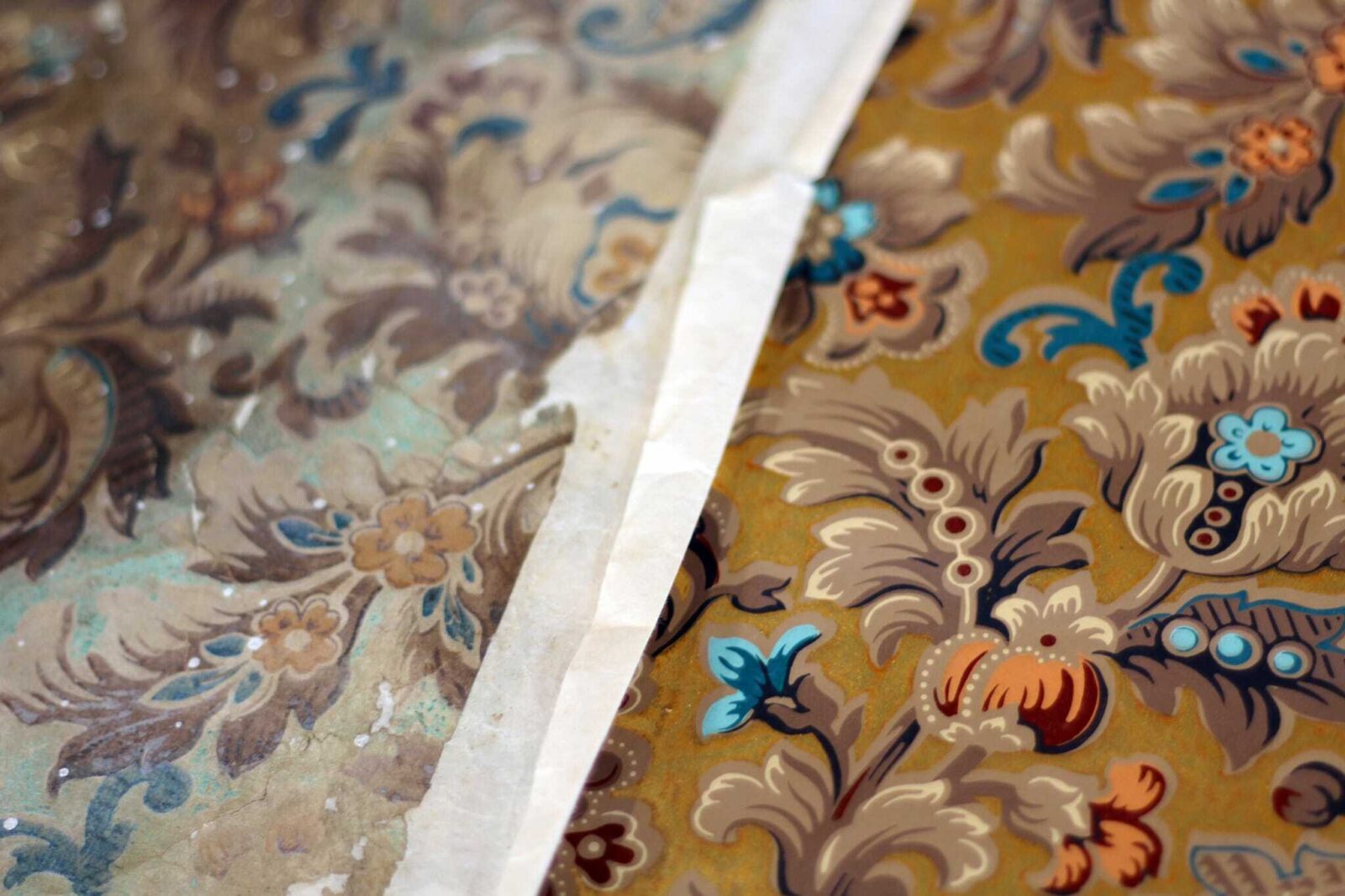
Before / after reconstitution of Santa Maria Novella
Wallpaper Decoration Restoration Protocol
To authentically restore a wallpaper decoration from before the 1970s, it is essential to use traditional techniques such as block printing. Modern methods like digital printing, offset, or screen printing do not faithfully replicate historical techniques.
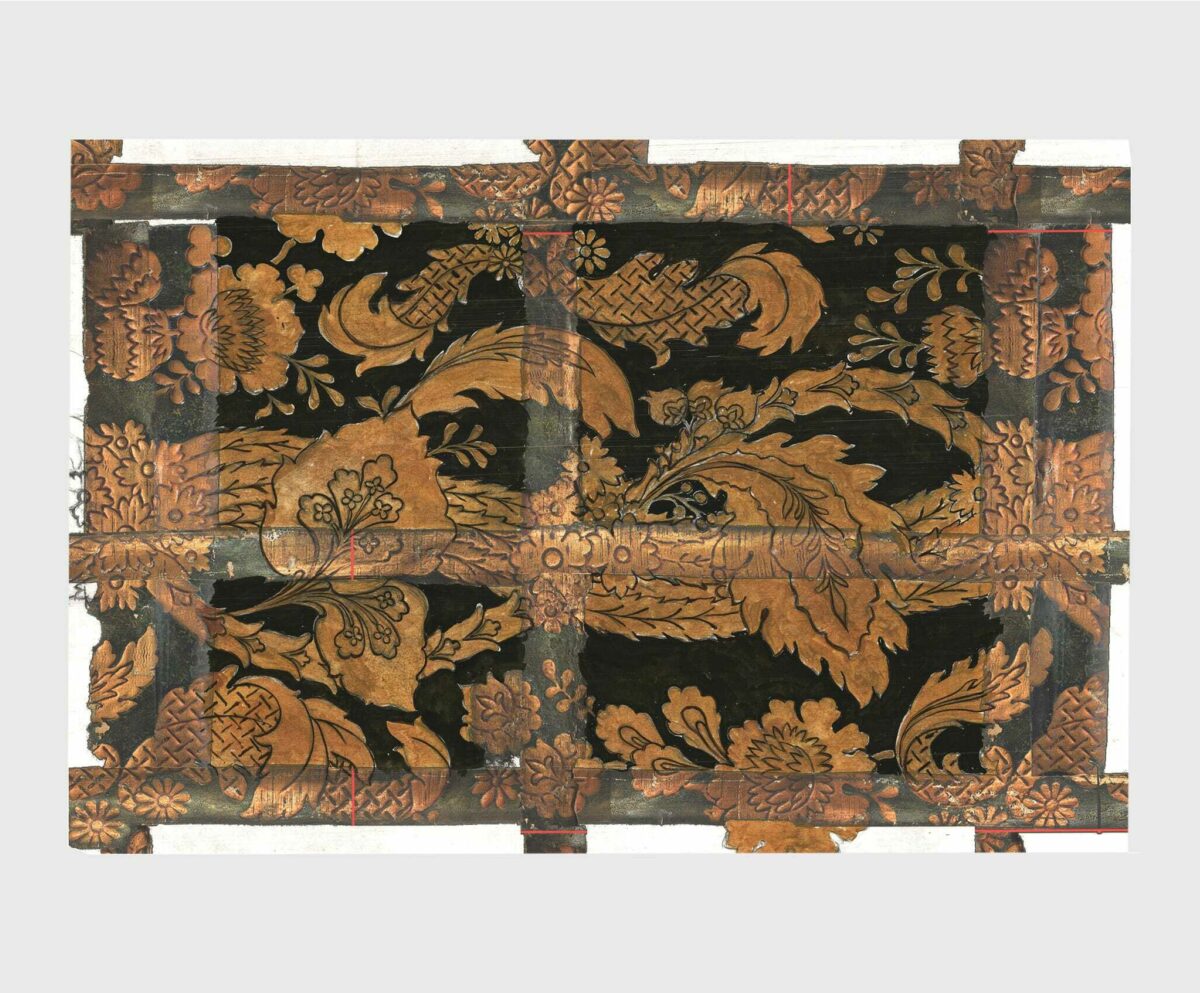
© François-Xavier Richard
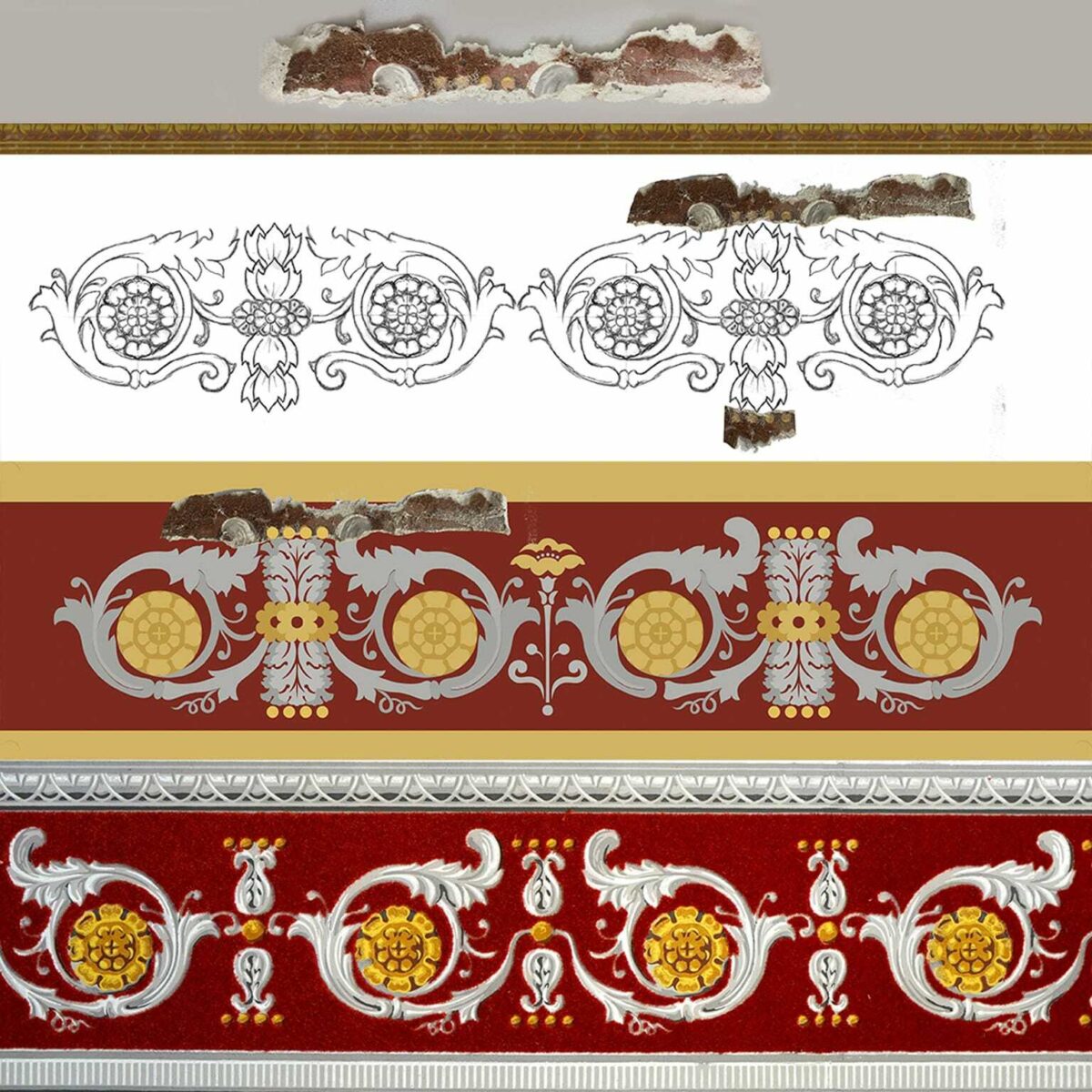
Border for le Château de Bussy-Rabutin © Plumecocq
Documentary Research
Research is crucial to understanding wallpapers in their historical and architectural context. Remnants of wallpaper are often found in places like cupboards, behind wood paneling, or beneath stretched fabrics. The method involves careful observation and analysis of the paper layers, which can reveal hidden historical documents.
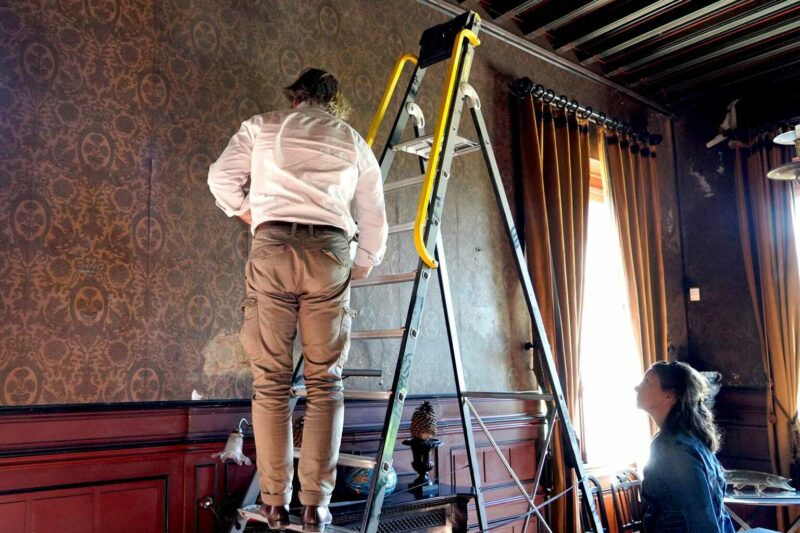
© Plumecocq

© Plumecocq
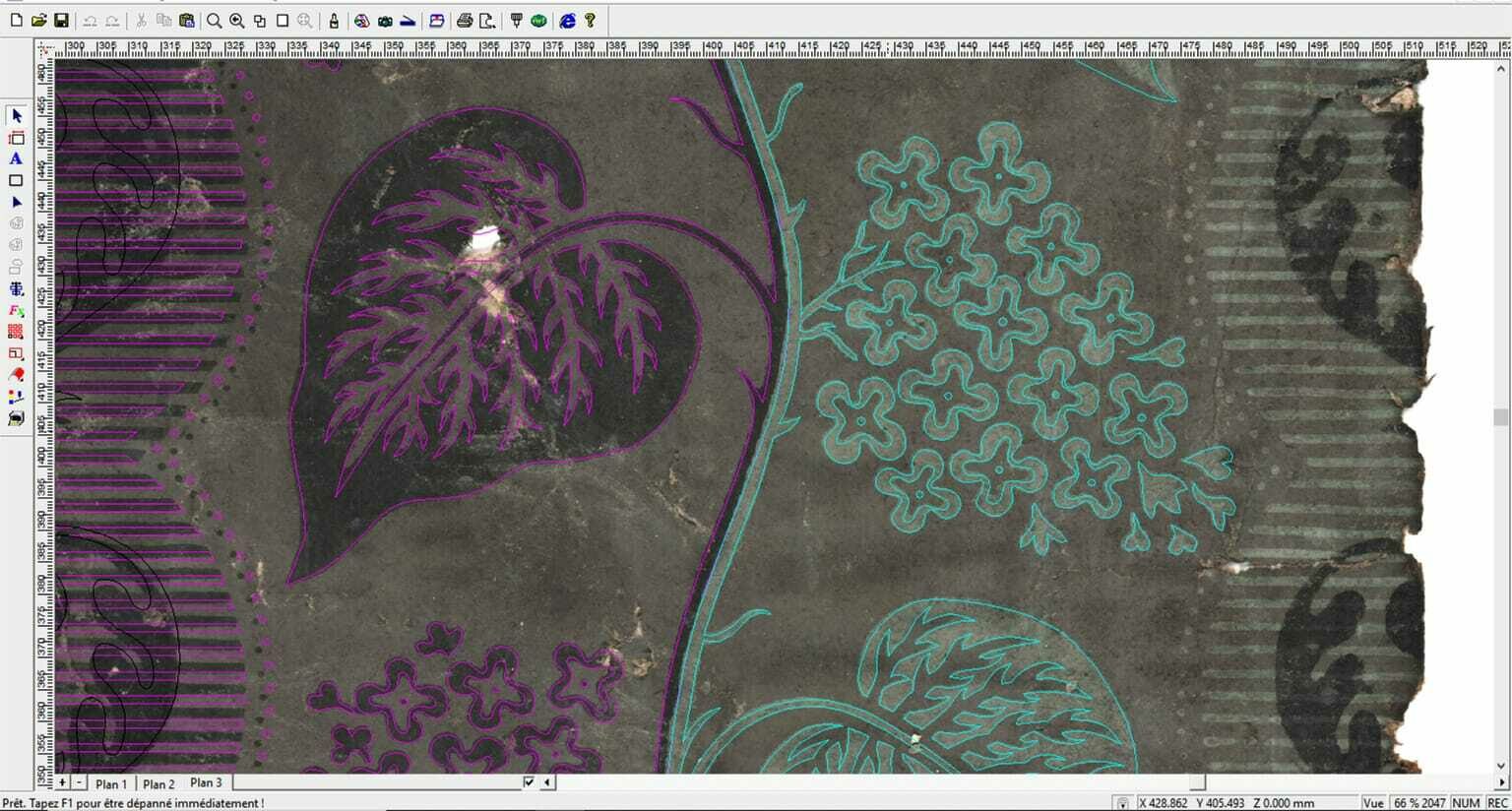
Digital drawing of an old pattern
Removal and Conservation
Wallpaper removal follows strict conservation guidelines. If possible, the paper is peeled off dry; otherwise, it is gently moistened. When these methods fail, "facing" with Japanese paper is used to protect the painted layer. The documents are then dried and cleaned according to specific methods.
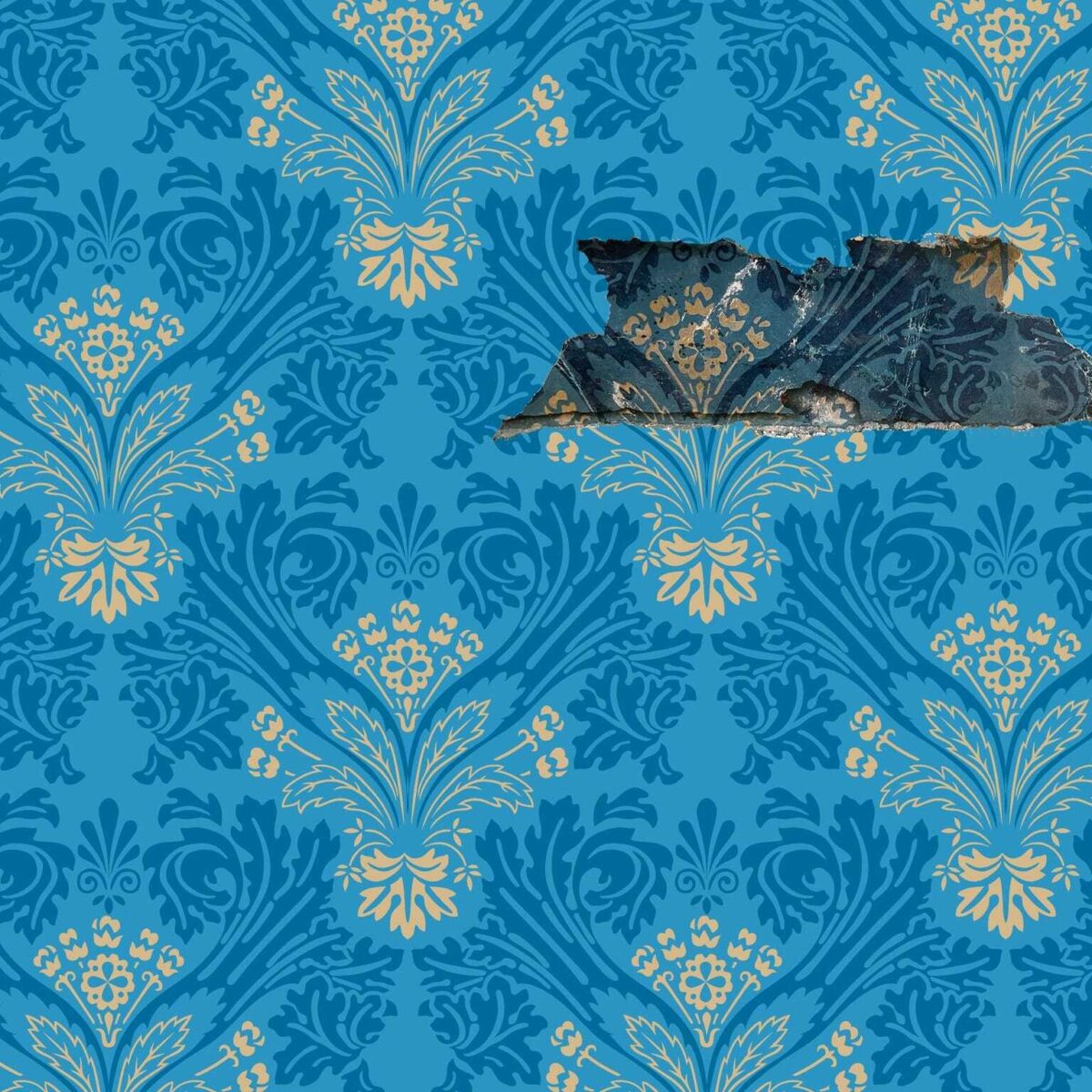
Old paper on his reconstitution © Plumecocq
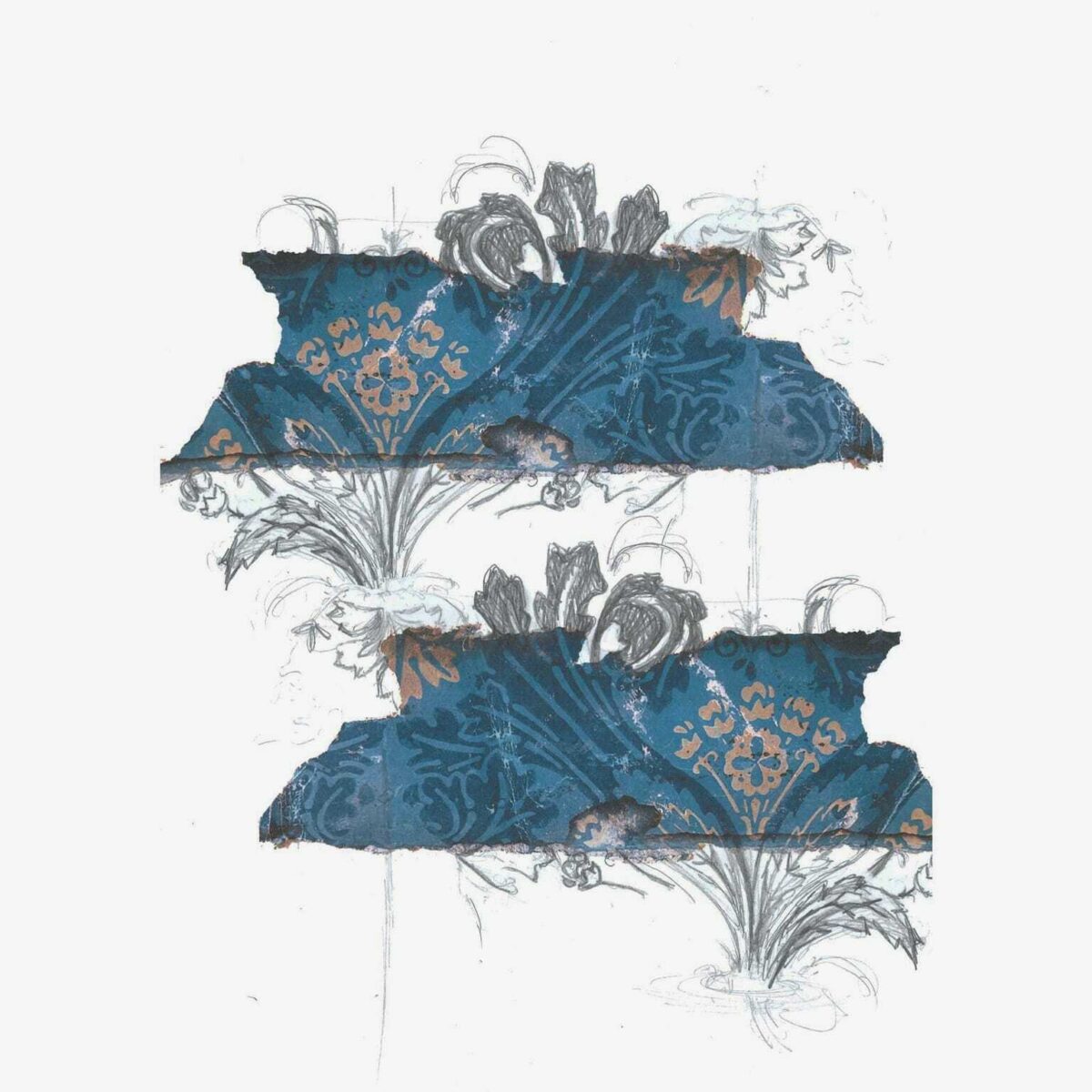
Pattern interpretation © Plumecocq
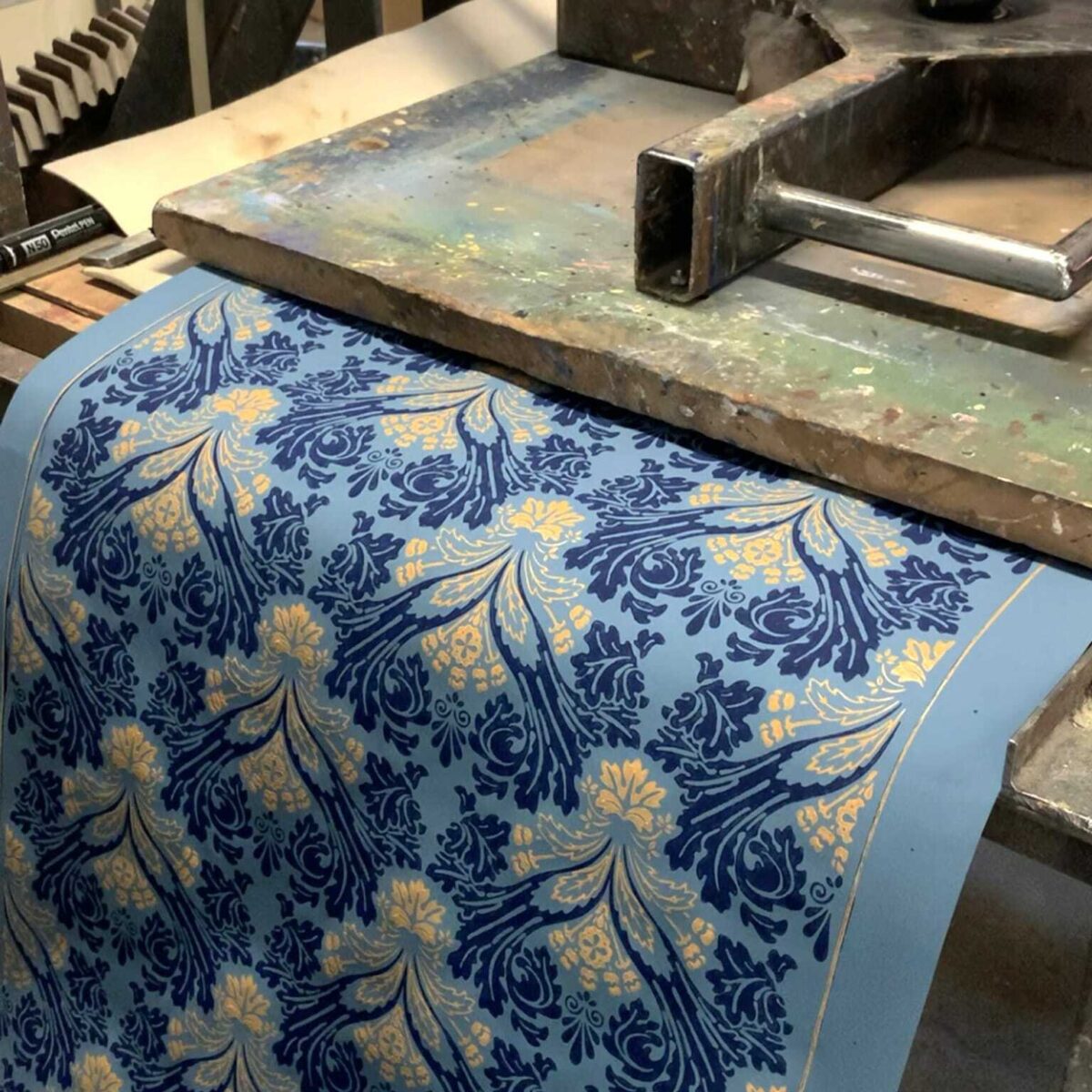
© Plumecocq
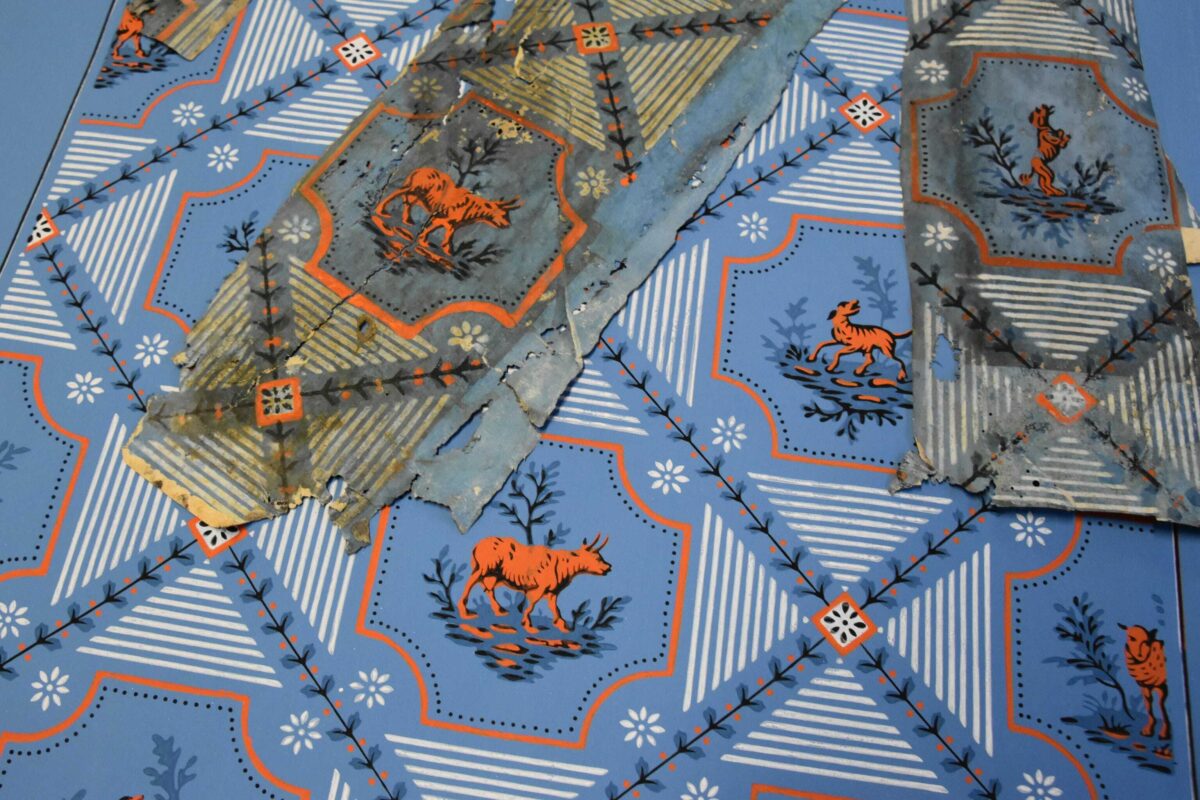
Old paper on his reconstitution © Plumecocq
Documentation and Reconstitution
When the found elements are insufficient, further research in specialized collections is necessary. As a last resort, gaps are filled by drawing, requiring a deep knowledge of historical styles and printing techniques.
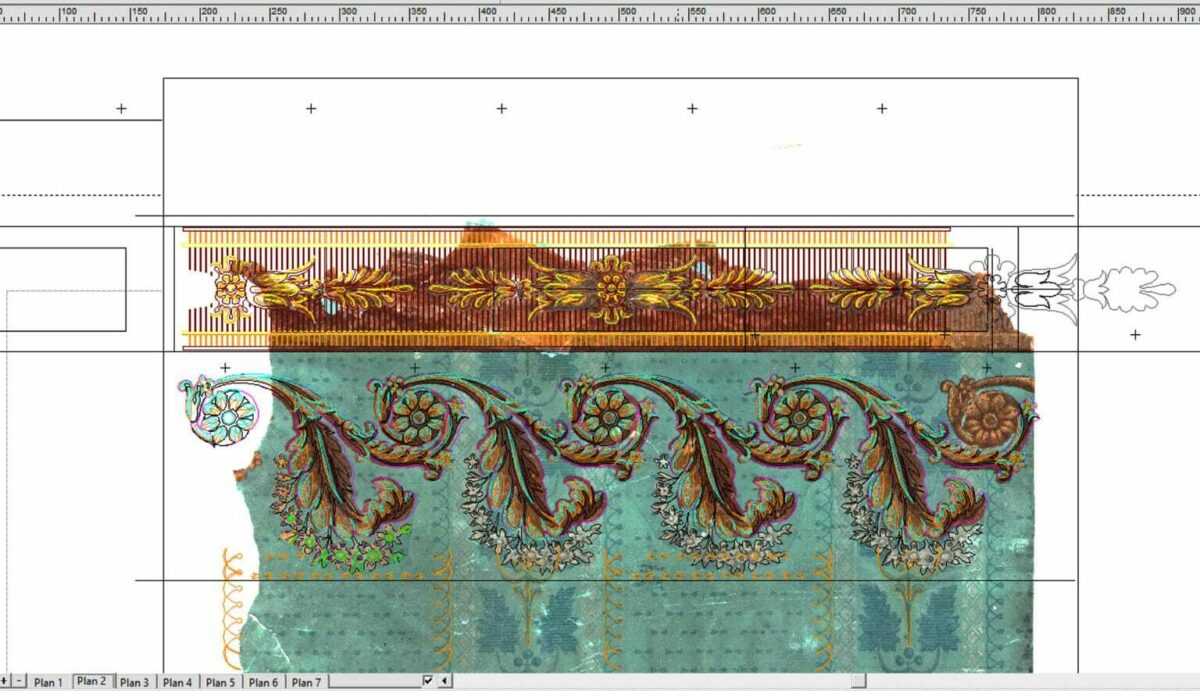
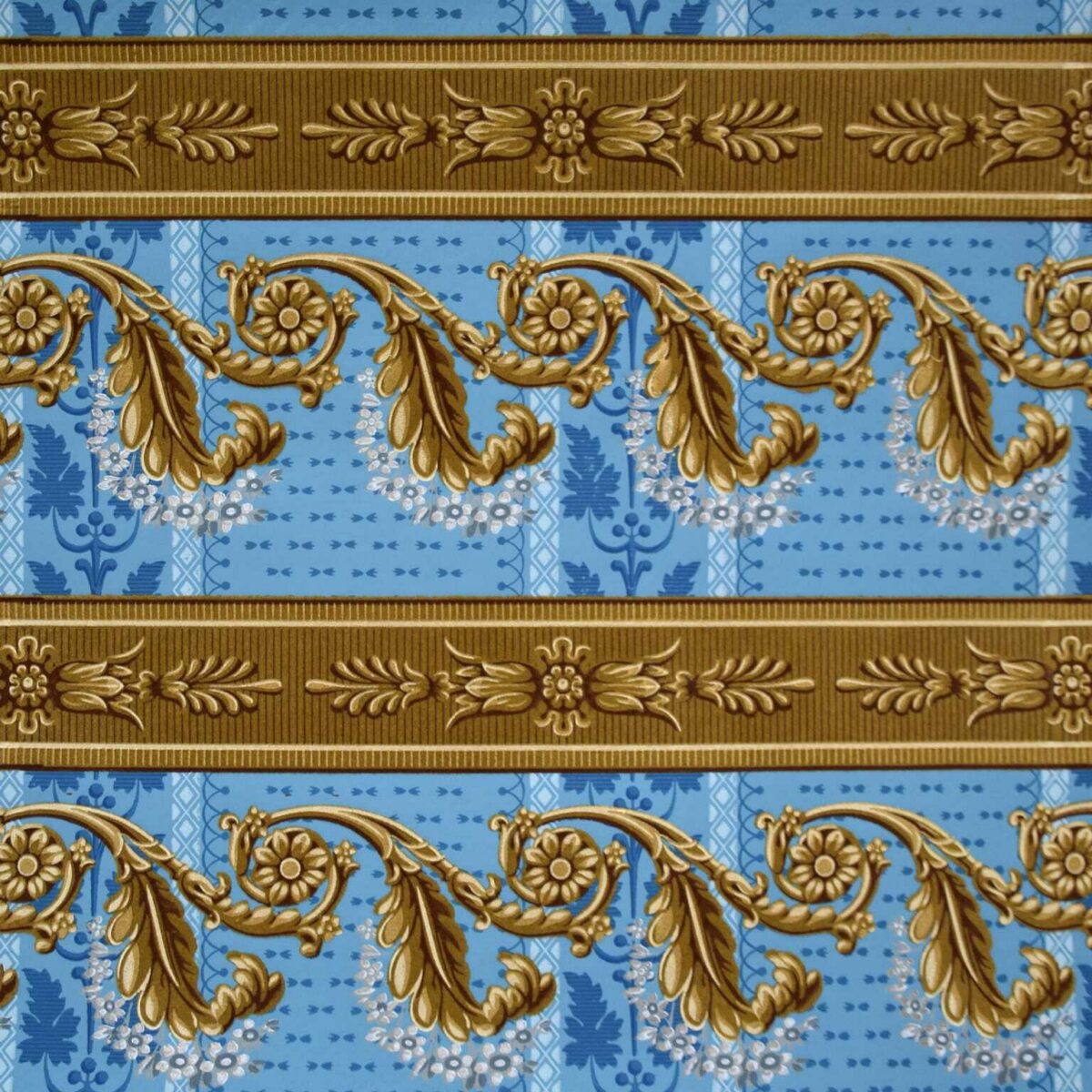
© Plumecocq
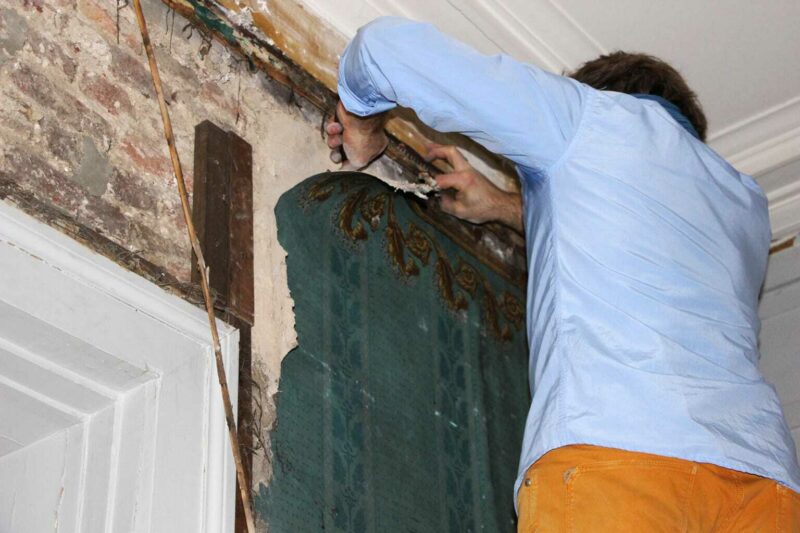
© Plumecocq
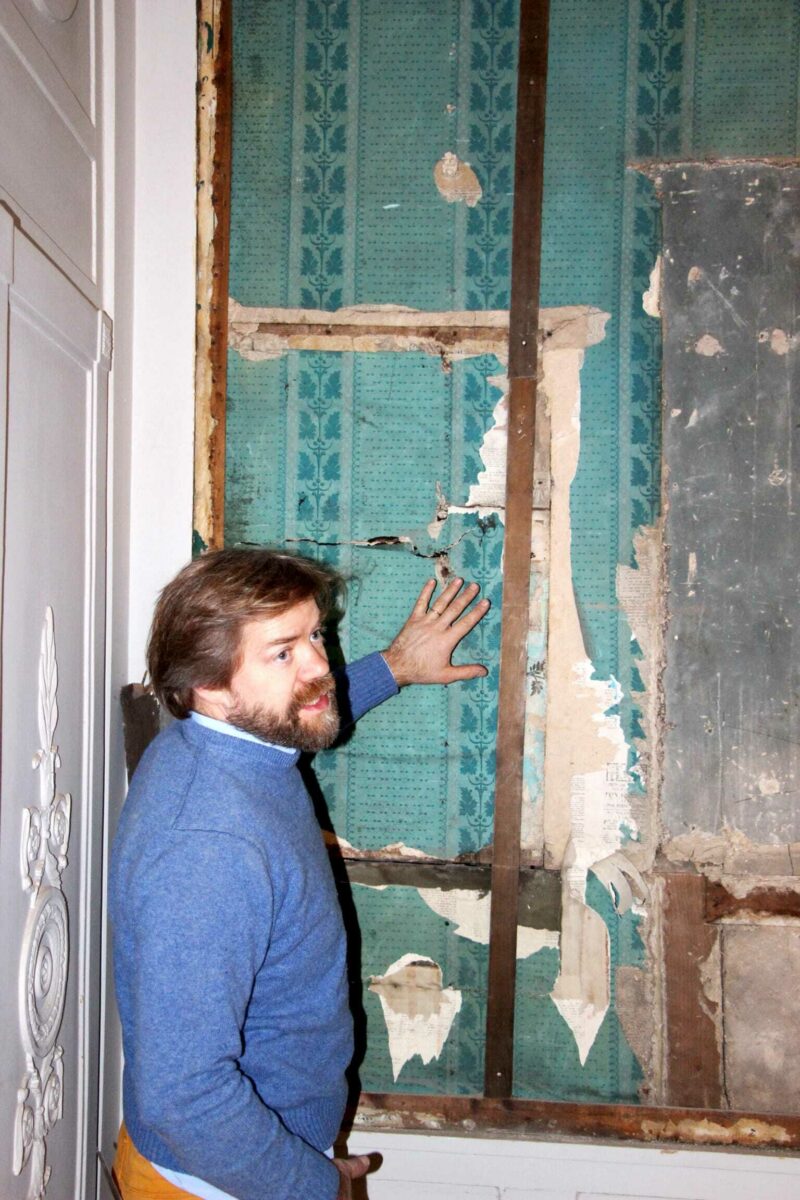
© Plumecocq
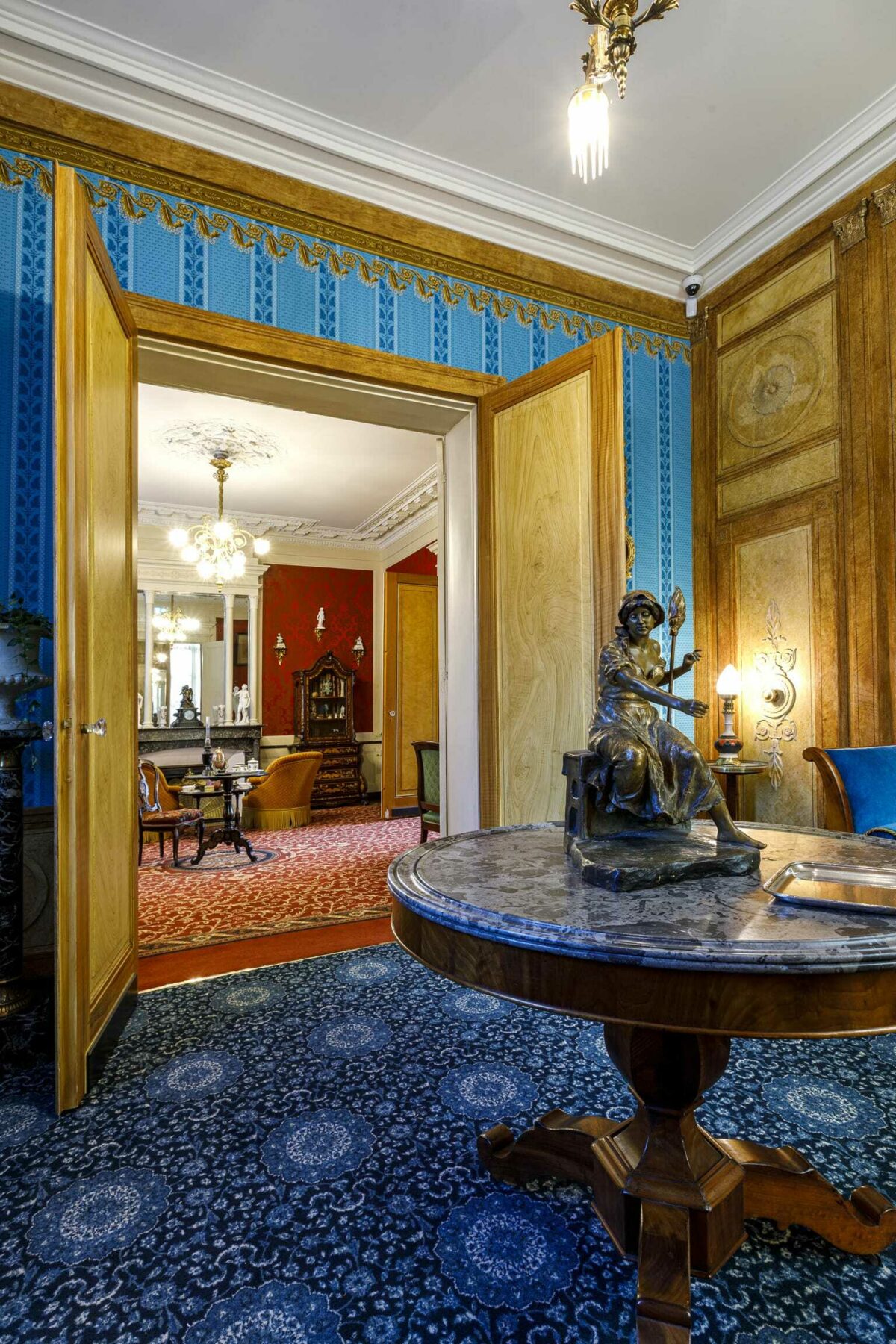
© Plumecocq
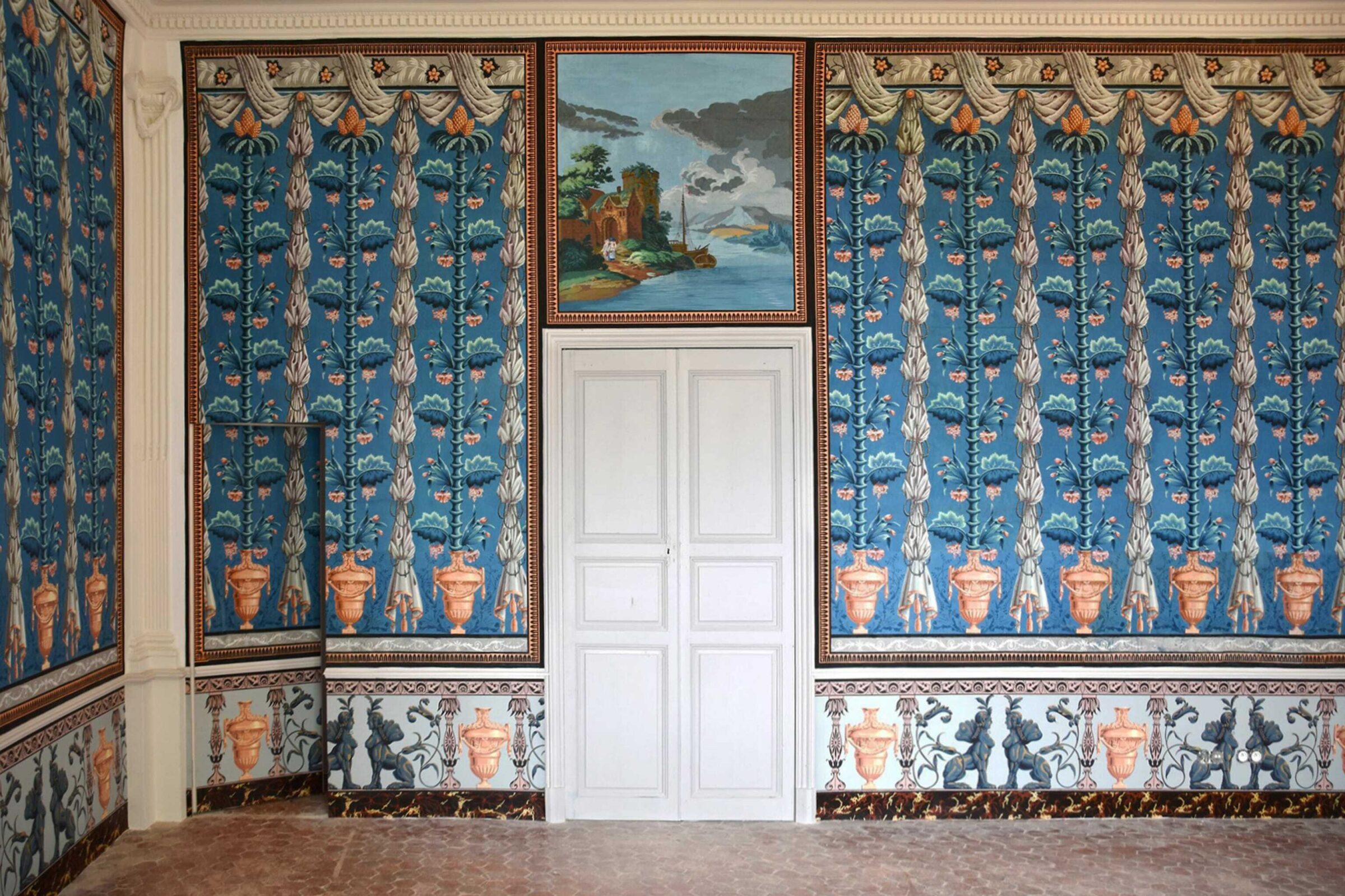
© Plumecocq
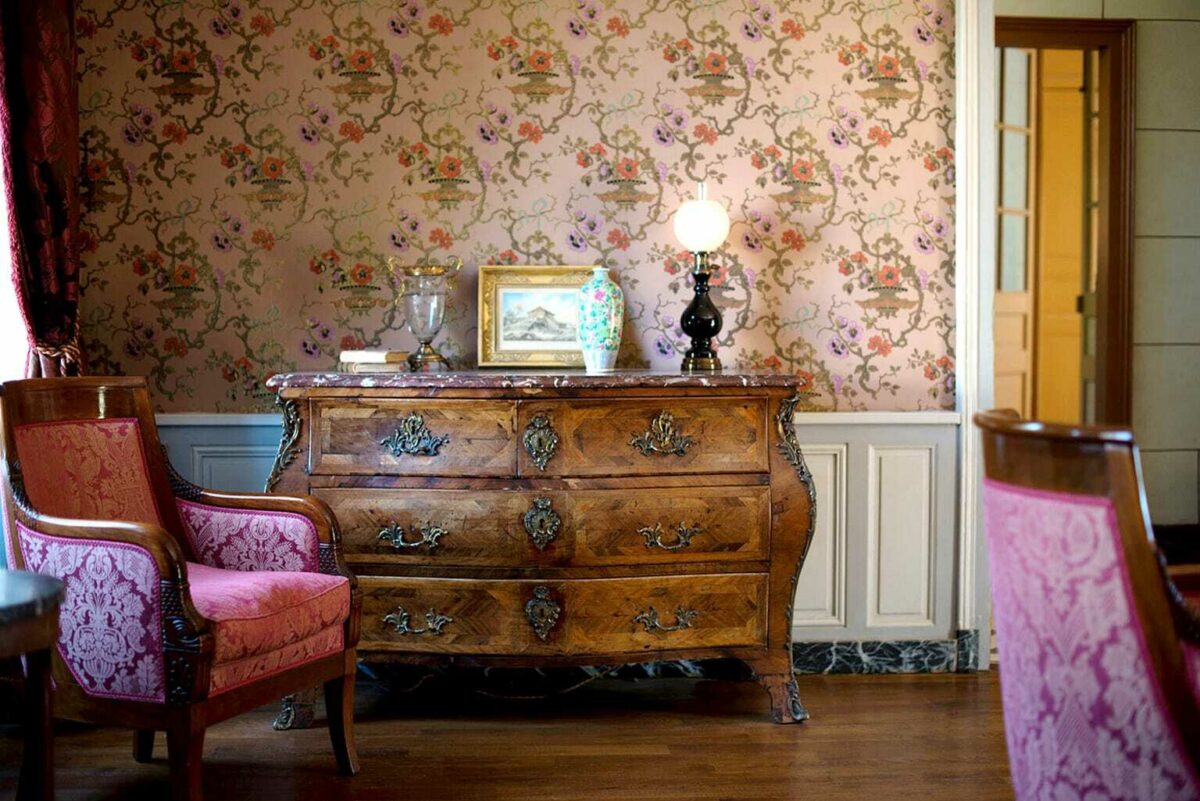
© Plumecocq
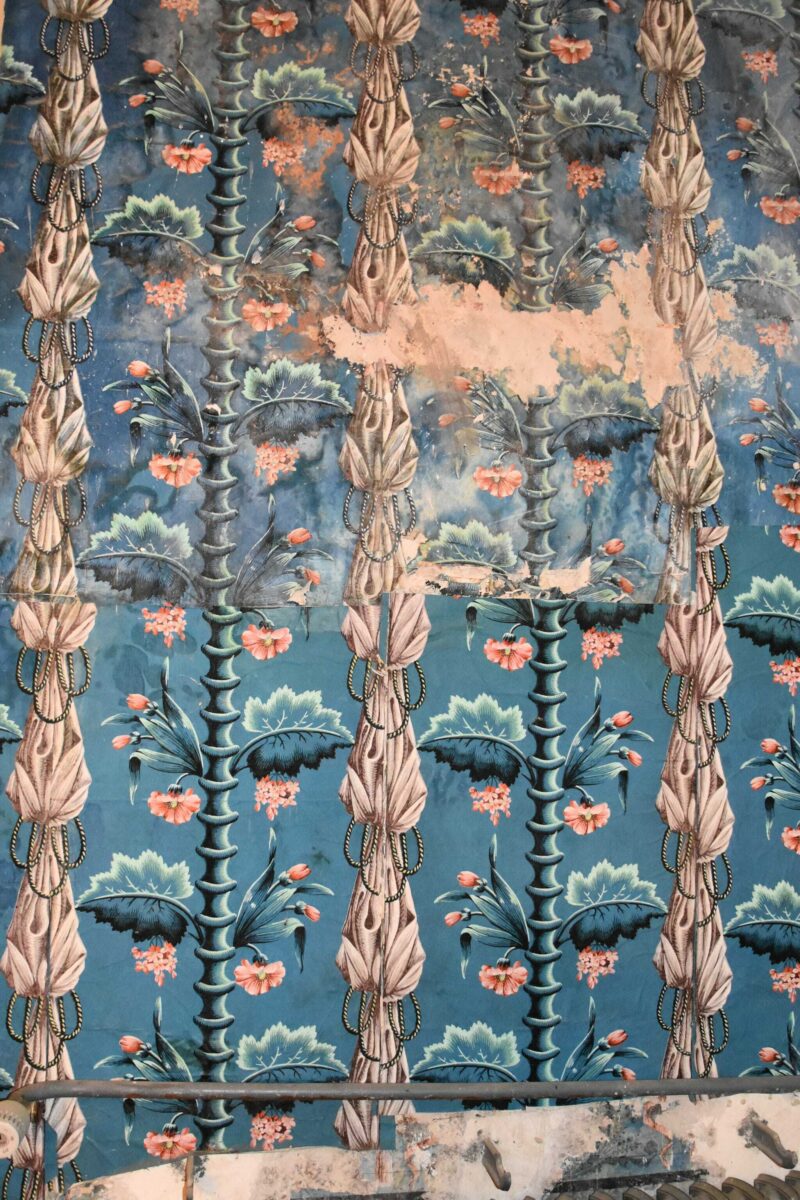
© Plumecocq
Digitization and Block Engraving
The documents are scanned and digitally restored, then vectorized for digital engraving. Each color and shape is drawn using Bézier curves, respecting the specifics of block printing. The blocks are then created from composite materials and engraved with precision.
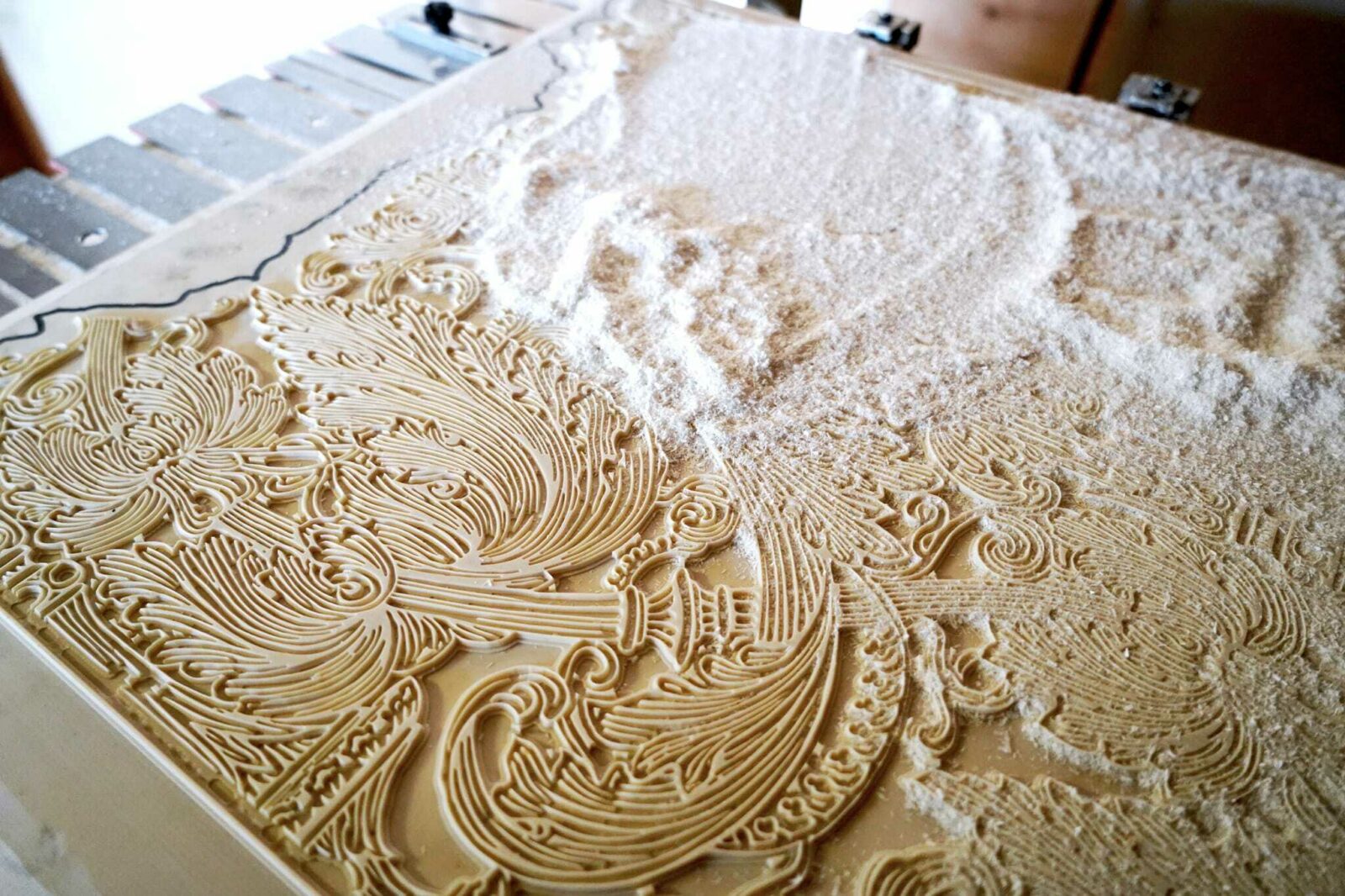
Engraved block © Plumecocq
Preparation of Colors and Paper
The colors are prepared using the traditional tempera technique, with natural pigments and rabbit skin glue. The paper, conforming to conservation standards, is coated with the base color on a large table before printing.
Block printing is done color by color, with particular care taken at each stage. Other techniques, such as toning and embossing, add textile effects or relief to the wallpaper.
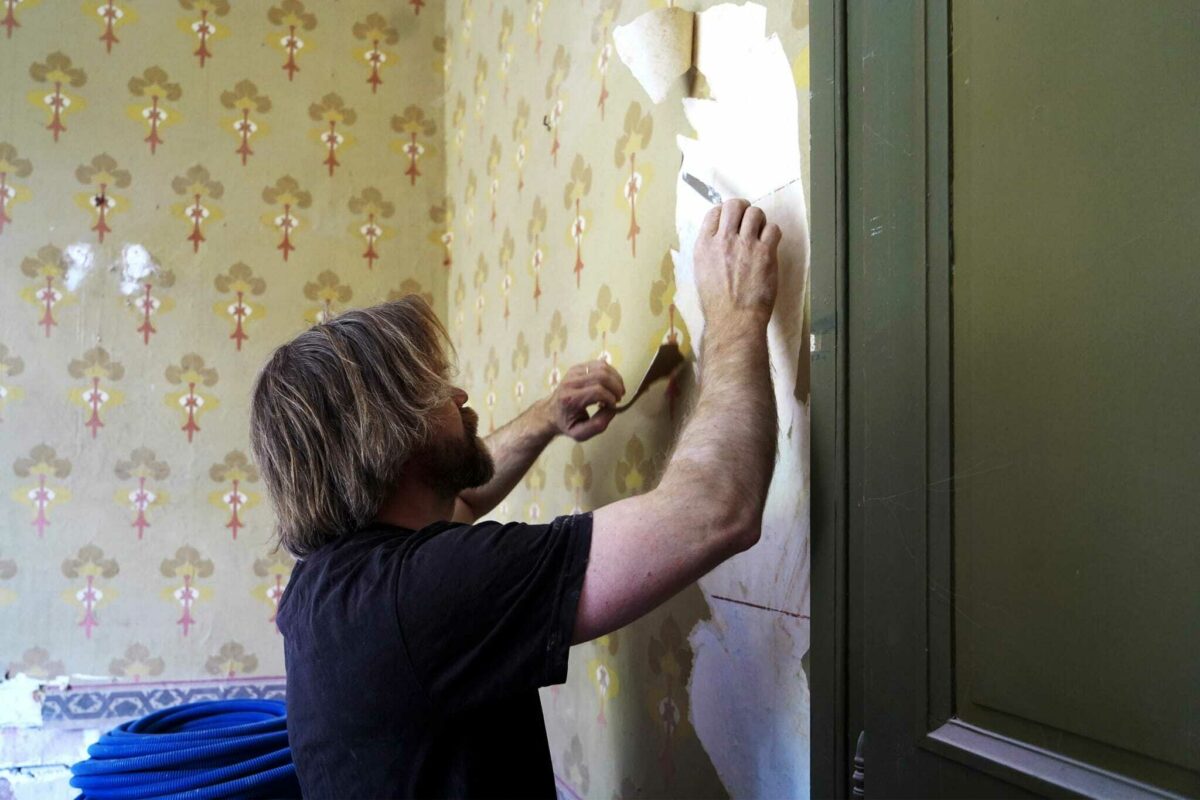
© Plumecocq
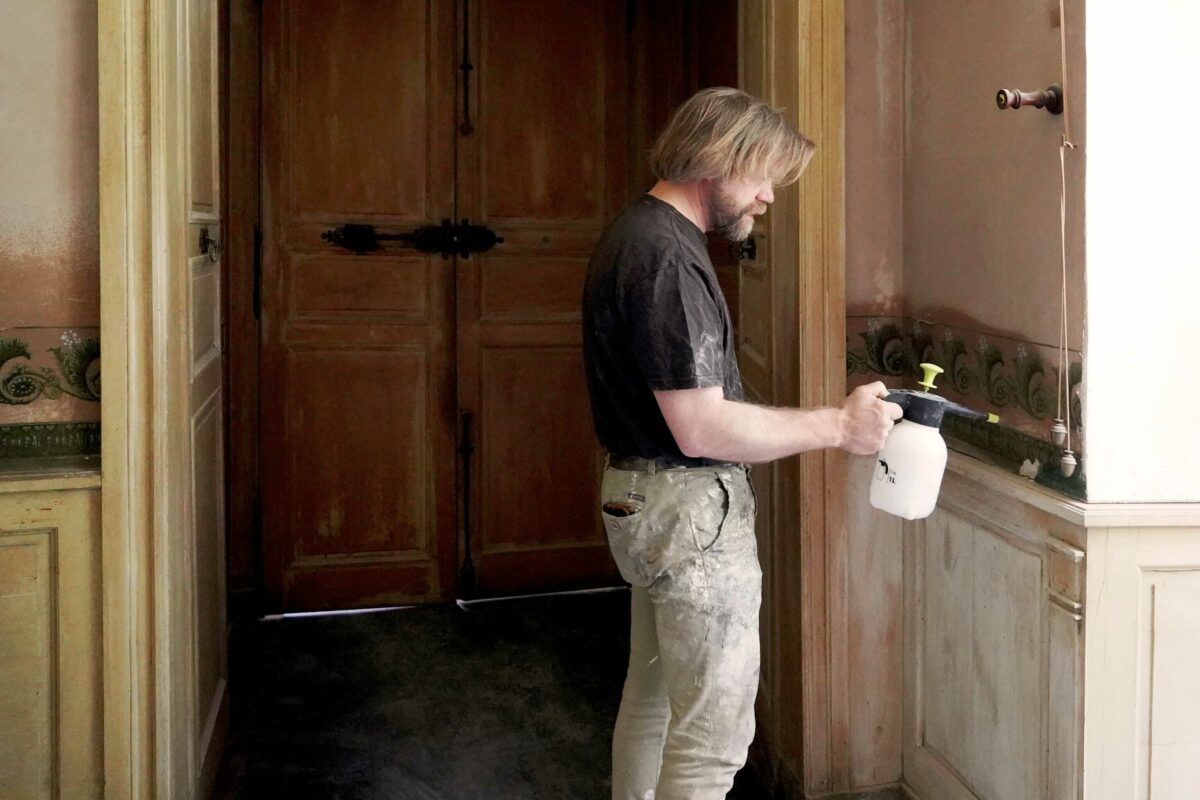
© Plumecocq
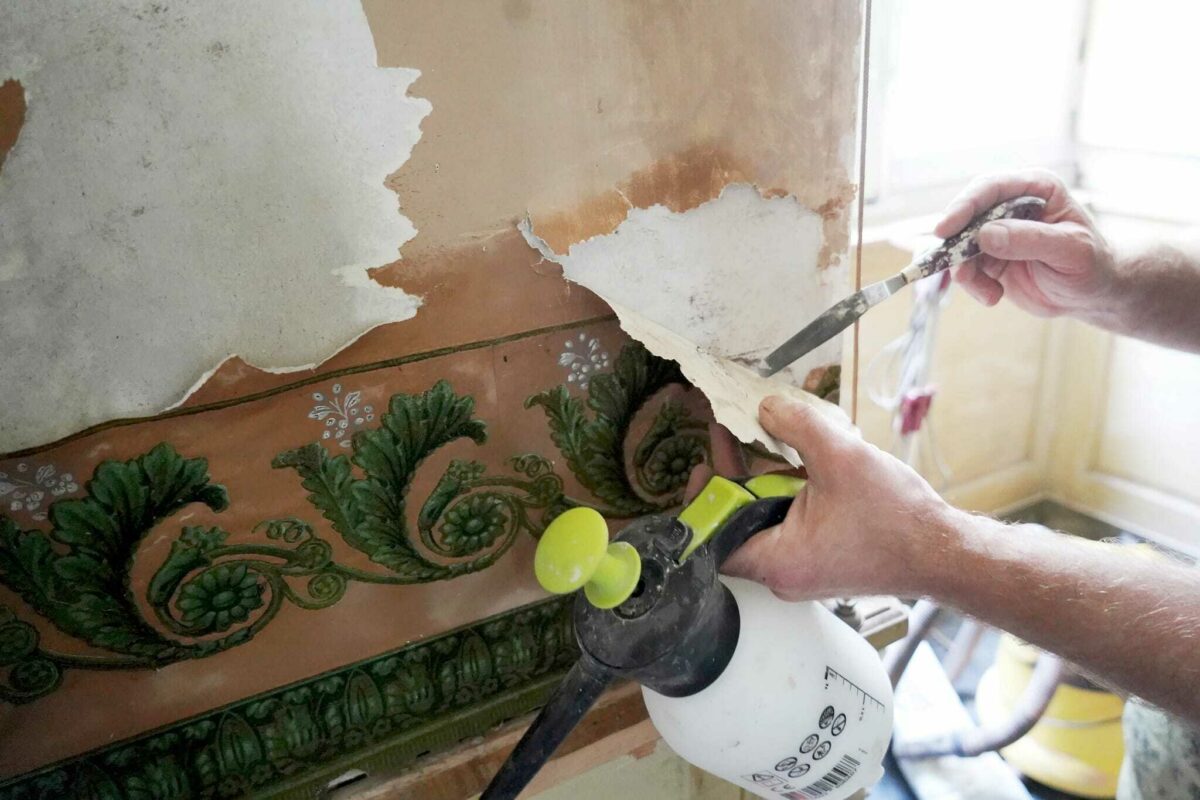
© Plumecocq
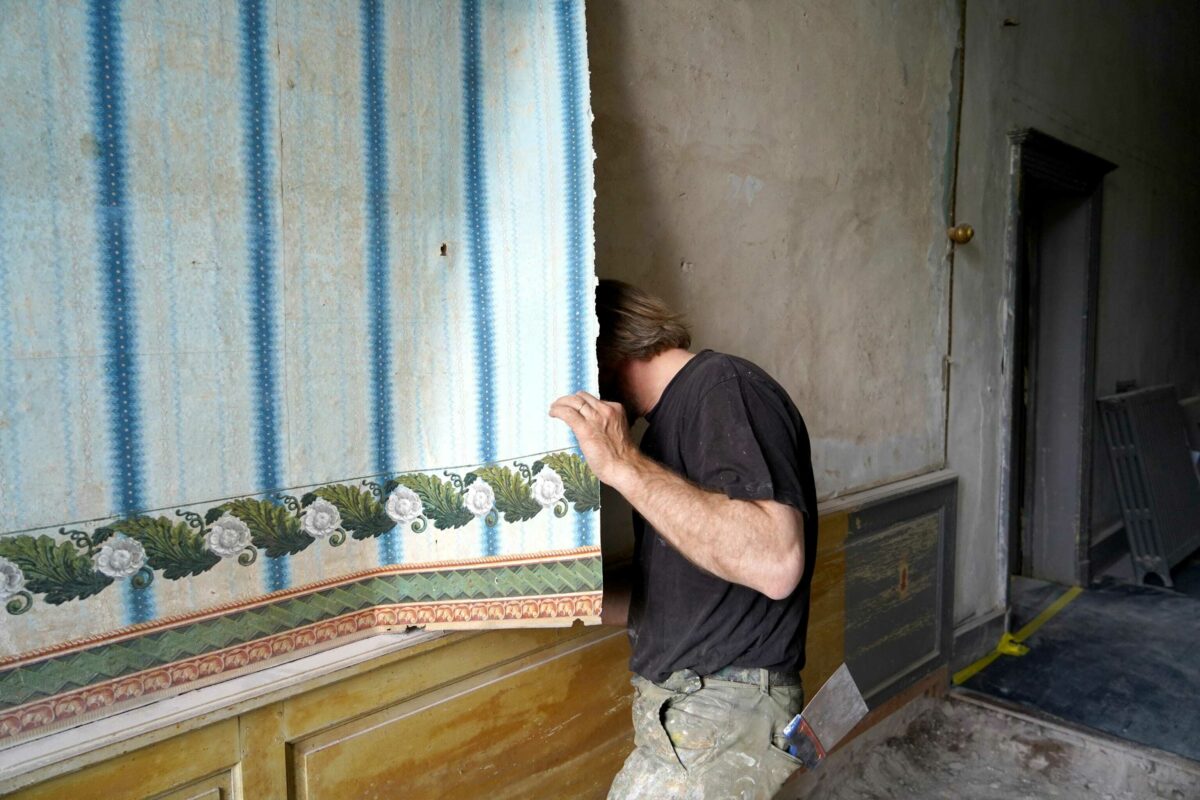
© Plumecocq
Printing and Finishing
Block printing is done color by color, with particular care taken at each step. Other techniques, such as toning and embossing, add textile effects or relief to the wallpaper.
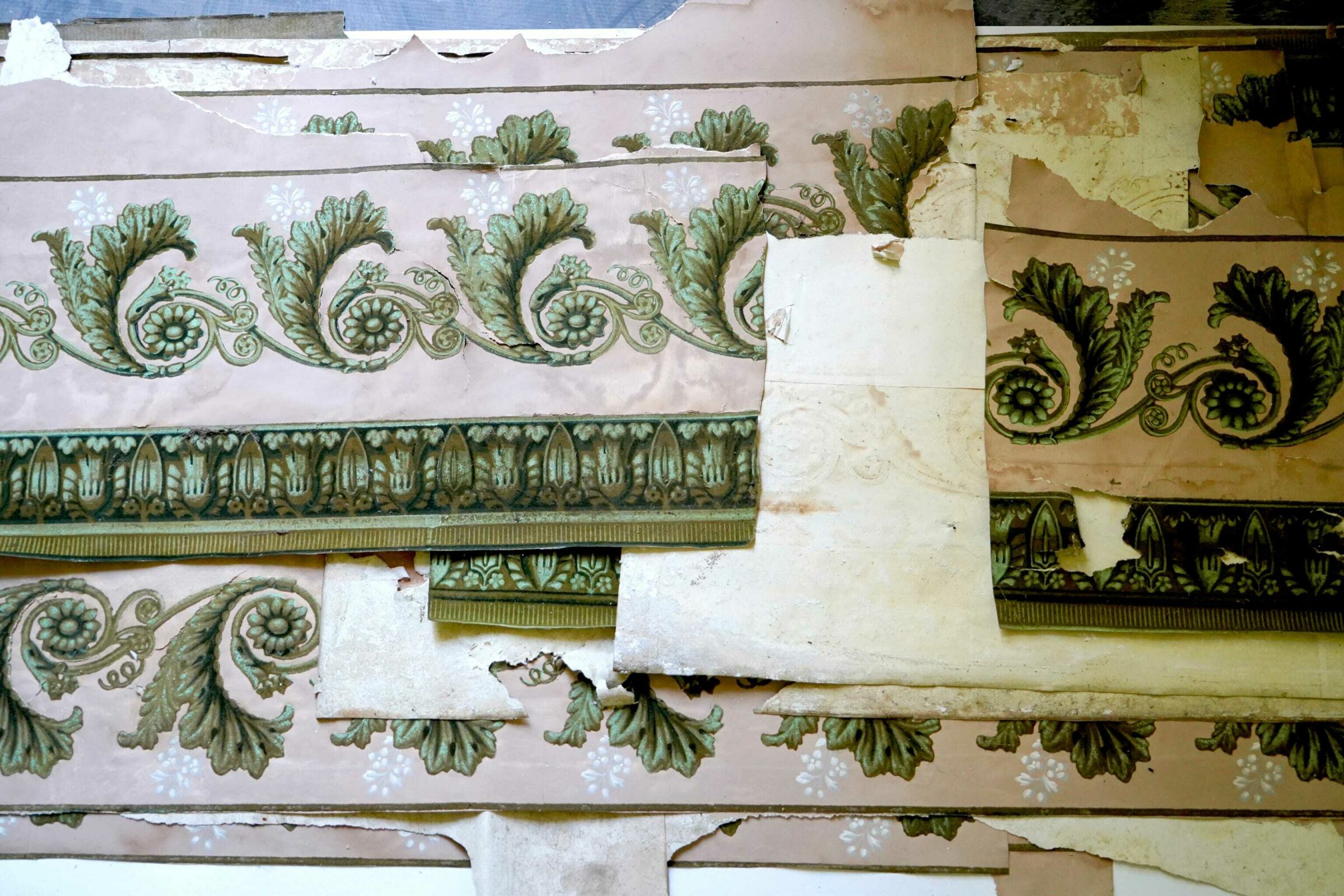
© Plumecocq
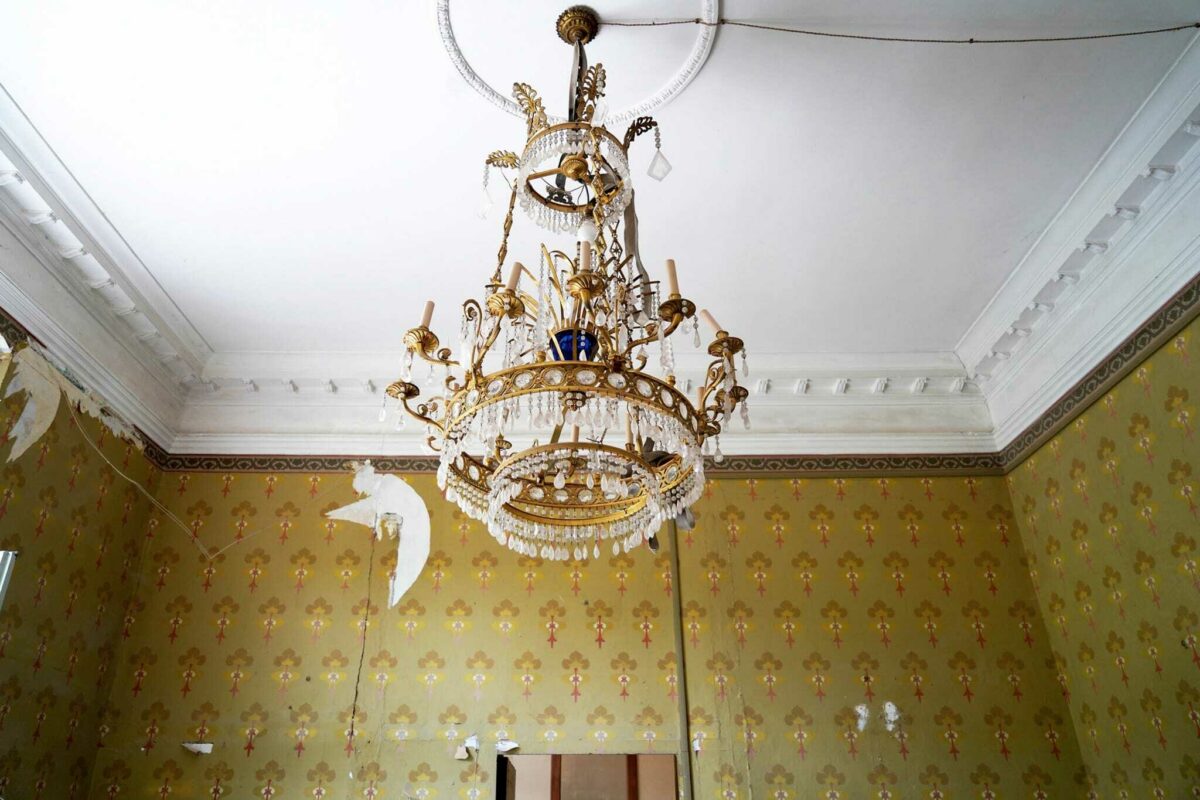
© Plumecocq
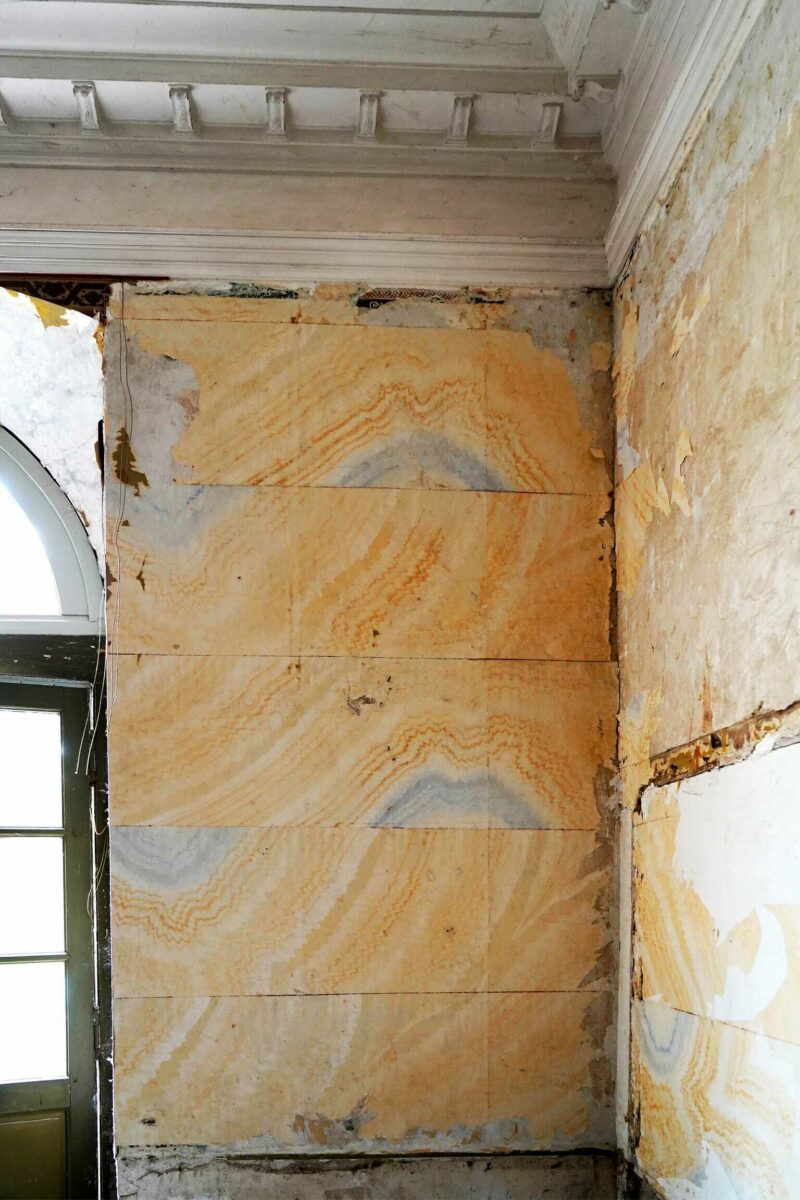
© Plumecocq
Wallpaper Installation
The installation requires meticulous preparation of the walls and wallpaper. The rolls must be marked and the borders cut. The installation itself requires careful application of glue and precise handling of the paper to avoid bubbles and ensure a perfect fit.
This meticulous process preserves the authenticity and quality of antique wallpapers, ensuring a faithful restoration of this precious heritage.
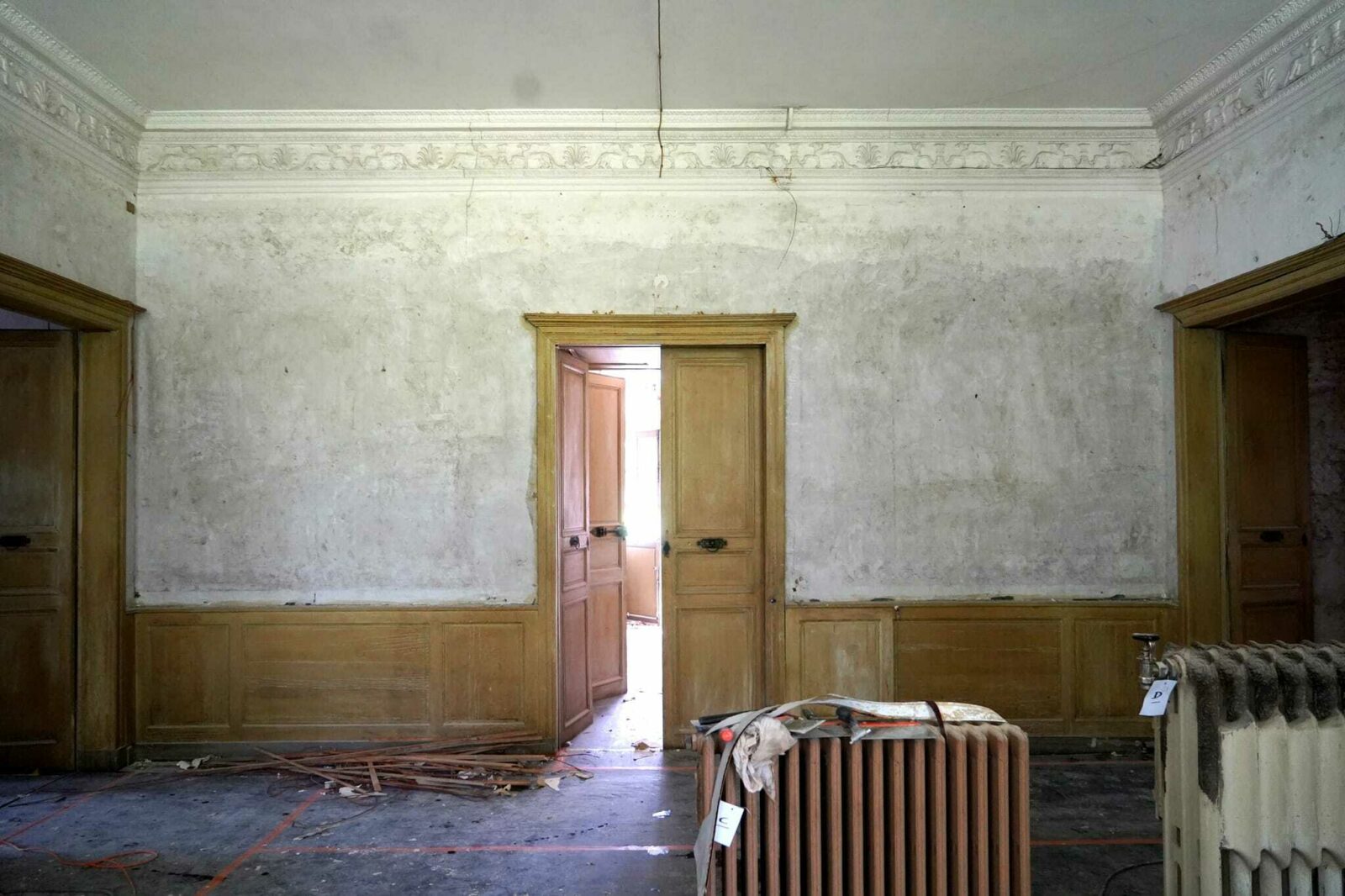
© Plumecocq
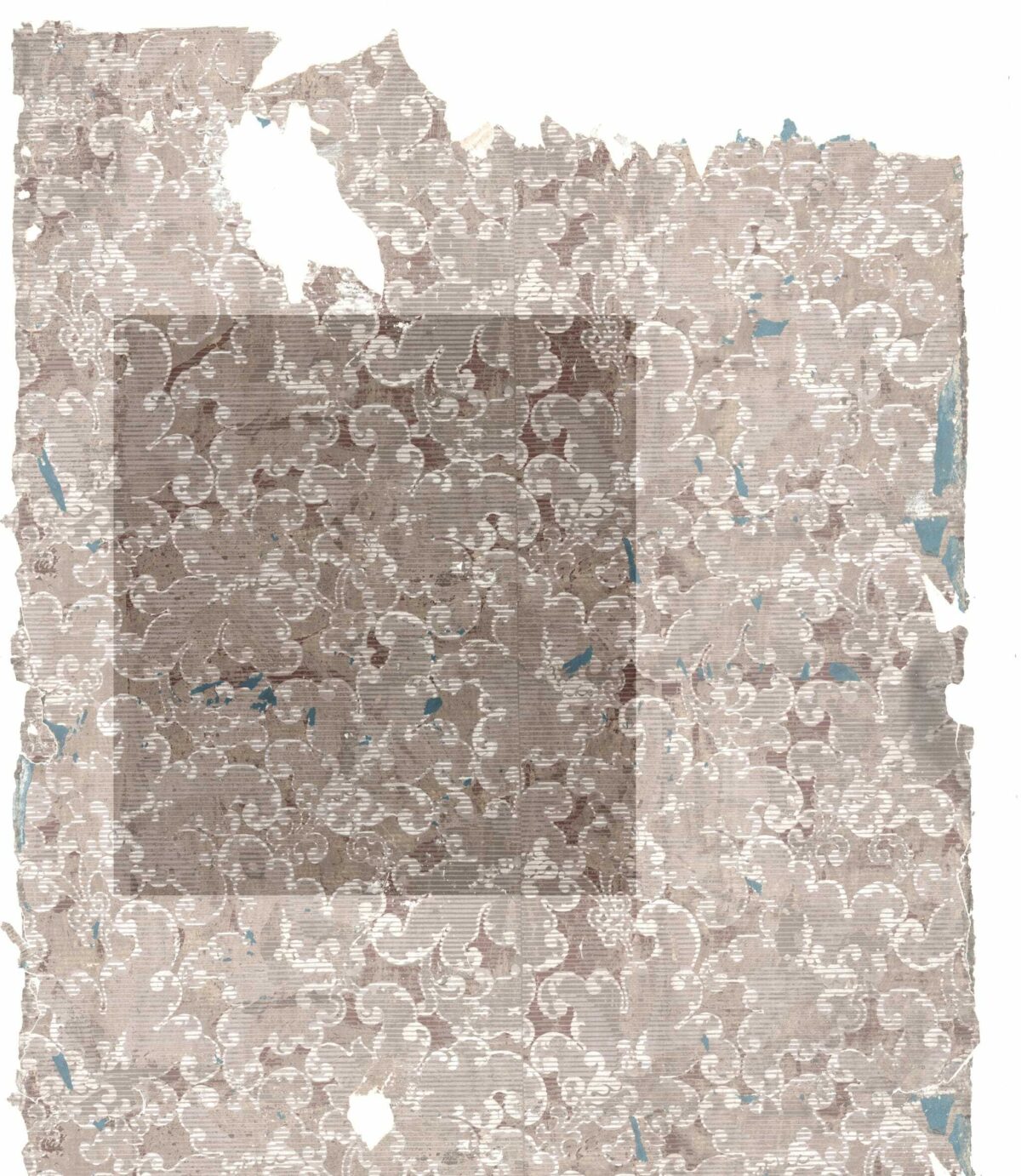
© Plumecocq